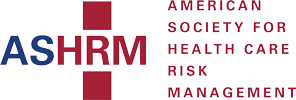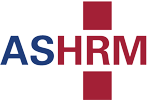For risk professionals working in hospital or health system settings during the COVID-19 pandemic, all bets are off. Rules have shifted and changes in processes and thinking happen not in days, but in minutes. Infection prevention practices, high patient acuity, staffing challenges and limitations on supplies all contribute to the need for adjustments in our current processes. When the need for modification is identified, it is essential to develop a process to determine how the change is implemented, and how the modifications and potential return to original policies are documented and preserved. Infection prevention practices, high patient acuity, staffing challenges and limitations on supplies all contribute to the need for adjustments in our current processes.
Role of Risk Management
Guidance from the risk management team presents various challenges because of the variation and complexity of questions. However, now more than ever, risk management, legal and ethics intersect. Additionally, some organizations have both system-level incident commands as well as local hospital-level command centers, creating multiple opportunities for miscommunication when processes are changing quickly. The risk team often has a key role in ensuring components are in place to safely bring about these changes. Review and approval of proposed modifications must be made by the appropriate individual or group with an eye toward safely, ethically and legally accomplishing the intended task.
Communication that is timely and accurate has always been our mantra and our greatest challenge. One new area of concern is that of record keeping in light of rapidly changing processes. Risk management, working closely with leadership and incident command, should ensure that the systems in place today that catalog new protocols, ethical decisions and temporary changes are accurately recorded and maintained for future access. Two years from now, when discovery requests come our way, what will be the best guide to ensure that the policies in place on during the pandemic can easily be produced?
Examples of Temporary Modifications
Advance Directives
The process surrounding advance directives is one example that comes to mind. In some states, the advance directive form must be witnessed by a non-employee or a notary. The patient’s family or friends may not act as witnesses. Often, the front line nurse, social worker or chaplain must seek out two hospital visitors.
Visitation policies and procedures have been revised significantly to meet the current challenge of minimizing viral exposure for patients, visitors and employees. Seeking out “visitor” witnesses is not as easy as it was before. Utilizing a non-employee, non-relative may be putting the visitor at risk of exposure while burning through personal protective equipment (PPE) in a less than efficient way.
Adjusting the advance directive policy for witnesses becomes a temporary necessity. An alert or a modification in current policy that includes the date and time of change might be wise to allow for employees to serve as witnesses.
High-Alert Medication Double Checks
In pre-COVID-19 days, two nurses easily could don PPE to check on dosing and infusion pump settings for a patient receiving complex medications. During the pandemic, given the number of patients with transmission precautions and the limited supply of PPE in many areas, seeking out other options for those double checks is vital. The approach varies for each patient specialty setting. To reduce the burn on PPE, something as simple as extension tubing on a line, visual checks using iPads and other solutions have come up for review. As each setting finds a solution to a pressing care concern, usual protocols or procedures may be slightly and temporarily altered.
Considerations as you Move Through Challenges
Advance Planning
Today, risk professionals are experiencing an influx of ideas, questions and the need to make decisions. Requests for assistance with developing solutions are coming at a fast pace. It is important to have clear role delineation and formalized steps in your process for making modifications to current policies and procedures.
Develop a process to identify policies or practices needing modification that includes:
- Designate who can make the suggestions/alterations (e.g., any staff member, department heads).
- Ensure that all requests are directed to one source for evaluation.
- Detail the accepted modifications along with implementation dates, once changes are proposed and evaluated.
- Determine how each proposed policy or procedure modification will be evaluated (by an individual, existing committee or ad hoc work group).
- Identify which departments or disciplines will be affected by the changes.
Documentation and Tracking
Developing a method to catalog and record temporary policy and procedure changes is important. The solution must be customized to your organization’s needs.
- Some organizations have advanced policy software that can make and track such changes with ease.
- For other organizations, creating new review dates for the current policy and procedure offers another way to continually record the modifications.
- An expiration date or review date for each change or alert should be set. When this change in practice is no longer needed, the updated alert can be resent to the same stakeholder group for further consideration.
- For organizations with a manual policy and procedure process, rather than altering the actual policy, consider using a ”Practice Alert” or “Protocol Alert.” The alert should reference the associated policy and procedure. With this step, the change is highlighted.
- A log (electronic or other) should be maintained outlining details of each change including dates of implementation and review.
Communication of Rapid Changes
If your organization is like many others, you are receiving communications from state and federal agencies, insurance carriers and others about reporting requirements, safety measures, and other steps needed during this unique time. Creating a communication plan will help keep your various teams on point, ensure your front line hears guidance first-hand and reduces any chance of confusion.
- Identify key stakeholders in need of this information and direct the communication to that group.
- Place a practice or protocol alert link on the organization’s COVID-19 intranet site,
- Determine the frequency of review, and the accountable individual or group.
As difficult times become creative times, you may have your own “MacGyver” solutions to meeting needs. These are just a few ideas being shared from the risk management front lines. The plans we make today for this unusual pandemic may guide us to further enhance emergency preparedness plans for challenges we have not yet met. Identify the “lessons learned” from this experience – an experience that has impacted both our professional and personal lives. These lessons will help build your enterprise risk management plan.

Joan M. Porcaro, RN, BSN, MM, CPHRM is a System Director of Risk Management and Patient Relations.








